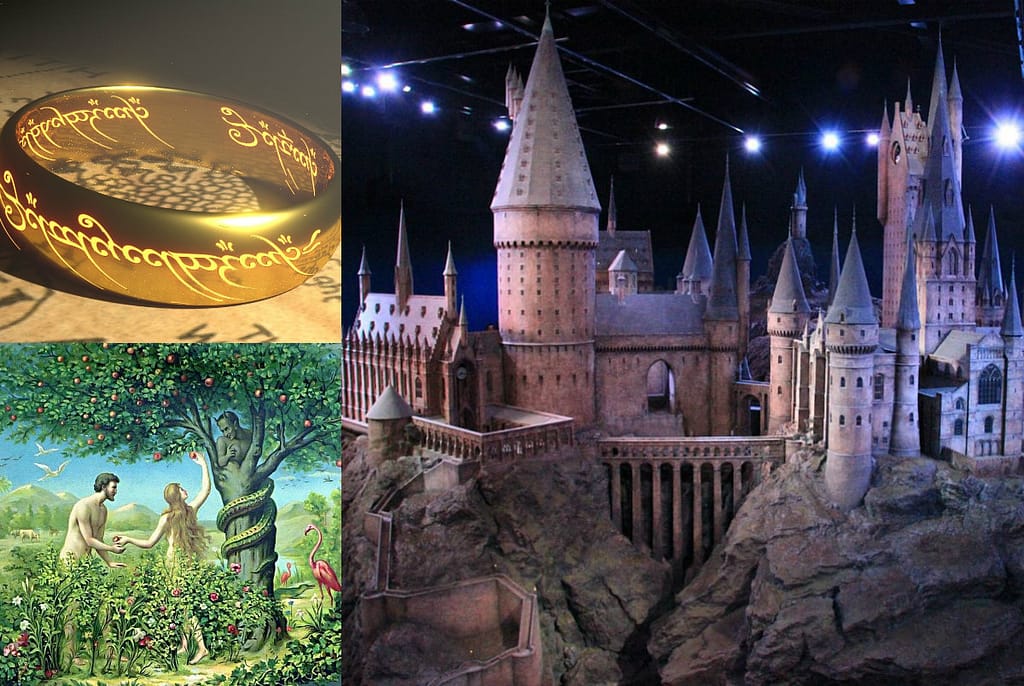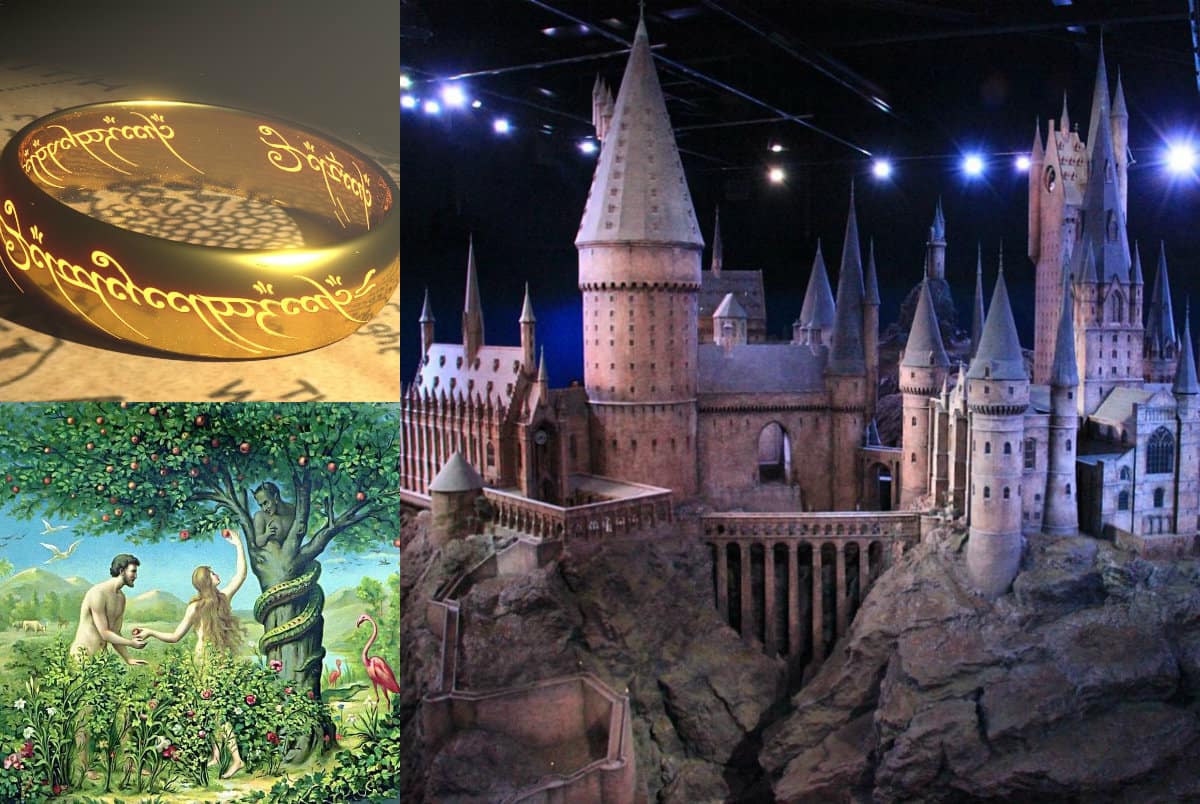“For darkness restores what the light cannot repair.” – Joseph Brodksy, “On Love”
I grew up on epic fantasy, superheroes, and blockbusters. Loved them as a kid, spoke up for them when they were derided, even used the “turn your brain off” excuse from time to time. Years weathered my innocence on this count and I was honestly confused. What changed? Why did some books, movies, and shows stick with me and others left me increasingly cold?
Turns out, it was me all along. Not my tastes so much as my standard for compelling stories. A change defined by this test:
Next time you feel empty or underwhelmed watching fantasy story of any genre, ask yourself: are the supernatural or technological leaps analogous to anything a human being actually goes through? Yes: Pass. No: Fail.
Fiction, especially fantasy, is at its strongest and most popular when applied to or extrapolated from human experience.
Language Is Magic
When I speak of fantasy, I speak more broadly than my personal love for high fantasy and sword and sorcery (what some call “low fantasy”). I speak of all stories that involve the supernatural or the impossible. Dress up a story as horror, as sci-fi, as superhero, and on and on. The genres all come back to storytelling. The creative act of imagination. To some degree, all writing is fantasy.

Let’s look at three of the most famous stories in not just fantasy, but literature, as showcased above. Harry Potter is credited with initiating a generation (of which I’m part) into reading. We all saw ourselves as students at Hogwarts. Author J.K. Rowling gave everyone child and adolescent confined in schools a magical counterpart, a place that was familiar yet fantastic, and threw in a Dark Lord to defeat for good fantasy measure.
The Lord of the Rings is the epic fantasy story, one of the few works in recent history that could be argued created an entire genre. Yes, there are numerous memes, from how one does not simply walk into Mordor to why the hell didn’t they just fly the eagles in the first place? The fact that these do not deaden the story’s power in the eyes of millions is a testament to author J.R.R. Tolkien’s golden metaphor of the One Ring, the embodiment of absolute power that no one, not even the pure and innocent Frodo, can resist.
And, the Bible. This tome is pure, uncut metaphor, mainly because the first half (at least) depicts many events that never happened and people who never existed. That said, it does an excellent job describing ancient understanding of our most basic shared humanity. The tale of Adam & Eve is apocryphal as they come in this regard. It is an allegory for growing up, for the loss of innocence, for the understanding of mortality. The apple is godhood, the knowledge we seek that both awakens and shames us, the snake our inner voice egging us on.
All of these depict universal human experiences in heightened environments. These human experiences, while played out in epic scale, succeed because they express internal struggles familiar across humanity, that transcend society and identity and defy rational explanation. Such storytelling is coveted, not to mention lucrative, when done well – and completely self-defeating when done wrong.
The balance of rules and rule-breaking when dealing with magic, aliens, robots, and the like can exhaust a genre writer and their audience combined. For some writers, it is hard to see the forest for the trees.

Game of Thrones, a show which I’ve written about more than any other, fell victim to this and broke its central metaphor by the end, an act I attribute to the mixed-to-negative critical and fan responses of the final seasons. By the end, many viewers, myself included, felt not catharsis so much as empty. Conversing with my fellow fans in the aftermath, many felt ready to move on rather than continue to dwell in what had become of TV-Westeros. Once beyond author George R.R. Martin’s books, the showrunners lacked his knowledge, skill, and commitment to properly finish the tale (seeing what the unfinished saga has done to poor George’s schedule, this is understandable).
Internal Metaphoric Consistency
The same ongoing back-and-forth regarding balance occurs in my head when I’m writing, particularly since I aim to write sprawling interconnected stories. Am I serving the characters first or am I getting lost in the weeds of the fantastic? The latter depends on the former, not the other way around, something longtime screenwriter and Mission: Impossible steward Christopher McQuarrie tweeted about yesterday:
This is why, where some people see plot holes or logical fallacies, they are, in some cases, missing the point. Internal metaphoric consistency – to essentially lead a reader to a thesis through shared story and style – is the goal, rather than the nitpicking boring elements of over-inflated, self-assigned importance. To go back to the “Thrones vs. books” analogy I love so much, Martin meticulously constructs a mansion, inspecting every brick and board installed whereas, by the end, the show bought used materials, slapped garish paint on them, and called it a day early.
Brian Collins of Birth.Movies.Death approached the importance of metaphor in storytelling in the realm of horror movies, given the repeat success of Jordan Peele’s self-described social horror-thrillers Get Out and Us. Both of Peele’s films tackle the deep-seated issues at the heart of their characters by fantastically externalizing the arc of their struggles, struggles audiences trust will resonate with them.
“. . . I can’t help but feel the studios are blowing their chance to make socially relevant horror at a time when they would likely be fully embraced. I know it’s appealing to draw from the past (this year’s biggest horror hit after Us, La Llorona, takes place in the 1970s, as does Annabelle 3), but as audiences aren’t interested, then it’s time to start mining the present for our fright fare. “

Perhaps most notably, both of Peele’s films are among the only smash-hit movies of the last few years based on original ideas rather than pre-existing concepts or franchises. One need only look at the tepid responses from audiences and critics to this summer’s latest entries in decades-old properties (Pokemon: Detective Pikachu, Godzilla: King of the Monsters, X-Men: Dark Phoenix, and Men in Black: International all underperformed at the box office. I blame colon cancer).
It’s not just good storytelling to supercharge an idea by using metaphor to make it relevant to audiences. It’s good business.
Logic Is Overrated
Disney has effectively conquered the branded film space: they have Pixar, they have their animation remakes (Dumbo was soft, but Aladdin is a huge success, The Lion King arrives in two weeks, and a Mulan trailer dropped yesterday that won over even people sick of Disney’s animation remakes), they bought Marvel and Lucasfilm to entertain the boys, then followed it up with 20th Century Fox, and are preparing to launch the streaming service Disney+, their answer to Netflix, this November. In fact, other than Us, the only breakout hit of 2019* is the Keanu Reeves-powered fight fest John Wick: Chapter 3 – Parabellum.
*A great point mentioned in the Buzzfeed Disney piece linked above: both Us and John Wick are movies Disney, as a matter of brand, cannot make. We are moving into an era where Disney entertains the worldwide masses and the rest of the studios scramble for the smaller niche markets, such as horror and R-rated action.

Of course, a metaphor’s efficacy exists on a spectrum, its success a balancing act. The iconic examples I cited at the top work because they heighten human experience without breaking the ineffable meaning behind them. We don’t need to know why Hogwarts has its ludicrous sorting system that puts all its obvious shitheads in Slytherin. We don’t need to know how the Ring of Power possesses its own will. We don’t need to ask God why he let the motherfucking Devil in Eden. Why?
Because we, the audience, understand it on a intuitive level. In fact, we understand it so well, some circle back around to being mystified. “It can’t be that simple, right,” some wonder? “There has to be more to it. And if there isn’t, then it’s stupid and obvious.”
Wrong, Straw Man. Stop thinking.
Stories do not communicate physically accurate truth. Stories communicate invisible emotional events. Both are equally real.
Here are smarter and more successful writers than me explaining this shit just yesterday:
The chronicle of factual reality – composed of sources, records, and measurements – is the purpose of journalism and academia. In fiction, such verisimilitude helps inasmuch as it grounds the reader and stays consistent.
The chronicle of the world contained within our brains, the roads, the bridges, the buildings, the mountains and valleys, the rivers and oceans, is the purpose of art and stories. Artists are cartographers in a way, mapping the internal landscape of our human experience in the language of stories, whether it is in words, in music, or on screen. Language is how we pass on our experiences across time, how we throw the light of knowledge into the future in the hopes another picks up the torch.
Stories are how we defeat death.
A story without a metaphor doesn’t lack purpose – the rule of cool exists after all – but it does lack one of the biggest tools for making a story relevant to overwhelmed and oversaturated audiences, trained to desire and expect “blockbuster” experiences, big screen or small. As we get closer to the new decade, I can’t imagine that problem is going to lessen.

Be First to Comment